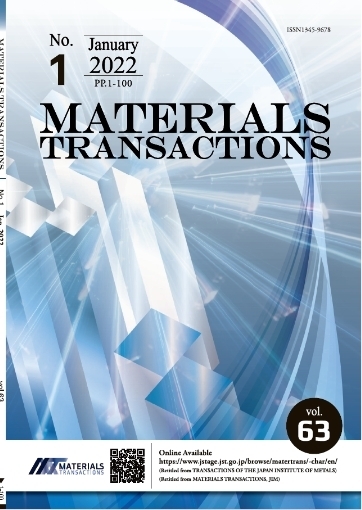Influence of Particle Shape on Microstructure and Magnetic Properties of Iron Powder Cores
Takuya Takashita, Naomichi Nakamura, Yukiko Ozaki
pp. 1859-1867
抄録
The coercive force of an iron powder core decreases with an increase in the circularity of the base iron powder. Microstructural observation reveals that the crystal grain size of the iron powder core is reduced by recrystallization during stress relief annealing after powder compaction. An analysis of the work hardening behavior during the compaction process shows that a rounder particle shape leads to smaller particle deformation, resulting in a reduced grain refinement effect during recrystallization. A grain boundary pinning model convincingly describes the reduction of coercive force with the increase in the eventual grain size. This Paper was Originally Published in Japanese in J. Japan Inst. Met. Mater. 79 (2015) 315–323.
他の人はこちらも検索
MATERIALS TRANSACTIONS Vol.56(2015), No.11










